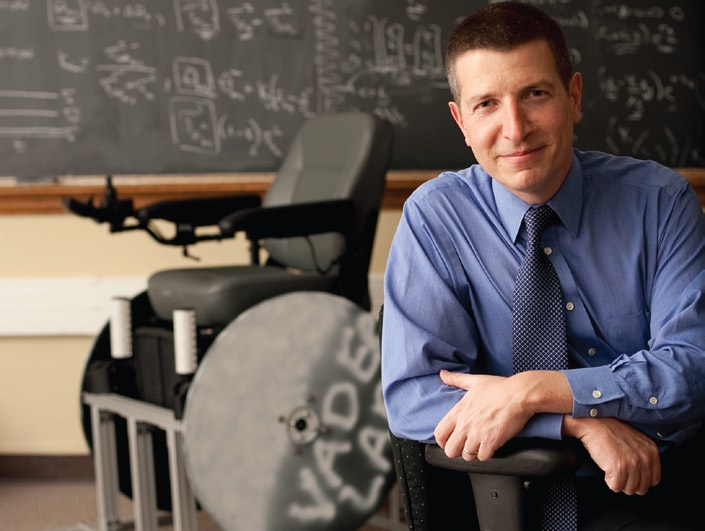Disability, John Spletzer believes, should pose no obstacle to mobility.
A blind person may not be able to see or a paraplegic to walk, but each can access technology that restores their ability to interact with their environment.
Spletzer, an associate professor of computer science and engineering, recently received a five-year CAREER Award from NSF to develop a robotic wheelchair that navigates on its own, with no human guidance, through a city.
Armed with high-fidelity LIDAR (light detection and ranging) lasers and detailed maps, the “smart” wheelchair avoids stationary objects like parking meters and light poles as well as “random events” like pedestrians and bicyclists. It transports users who may not be able to see or walk to doctors’ appointments, the pharmacy and the grocery store.
Spletzer and his students have taken a cue from Google Street View, which allows users to take virtual tours of cities by looking at thousands of stored images.
“We’re making similar maps that are useful for robots, not people,” he says. “Robots respond to different cues than humans do. People see the real world and all its details. Robots using lasers recognize objects that reduce to an exact point and are easy to track.”
Spletzer’s students drive through sections of a city taking laser photos to make a hi-fi 3-D map of the environment. The map is downloaded to the robotic wheelchair, which can then navigate that environment, halfway in the real world, halfway in the virtual world.
“The robot identifies landmarks – trees, poles, building faces and corners – in the real world and looks for them in the laser map,” says Spletzer. “Once it finds them, it will be able to accurately estimate its position in the real world. It doesn’t need GPS, because of the accuracy of the server vehicle maps and because of the LIDARs.”
The robotic wheelchair has traversed a 1-km route and arrived at its destination to within an accuracy of 20 cm. Meanwhile, says Spletzer, the robot learns from experience by comparing new objects it sees in the environment with images in its database.

